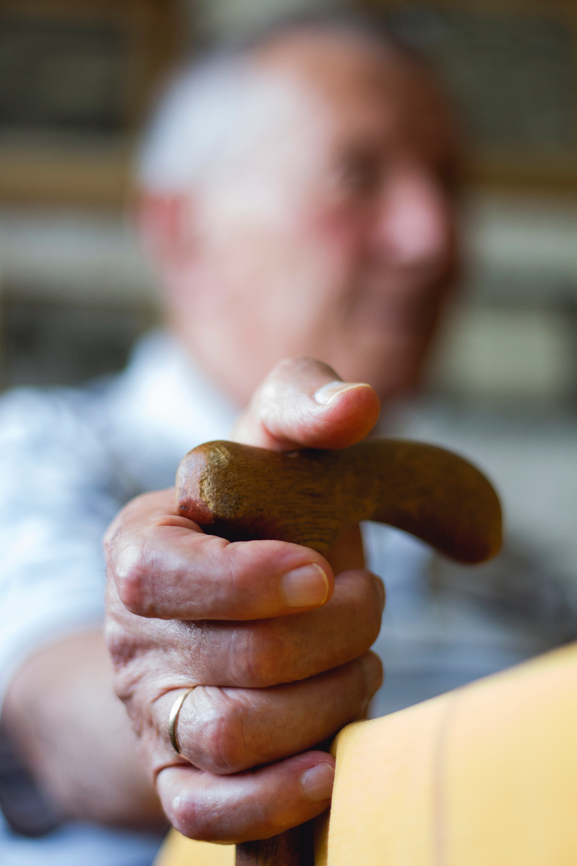Arthritis, balance problems or recovery from injury are some of the common causes for older adults to find themselves in need of a cane to prevent falls and feel more secure. By helping to redistribute weight, stability and gait can be improved if used properly and mobility can be preserved.
Today’s canes are anything but stodgy; they can be elegant carved wood or colorful aluminum. Canes, or walking sticks, may be foldable, have a curved or straight grip and some models are footed to provide more stability. All should have a rubber base for traction and to help absorb impact.
Canes can be fitted with ice grips for winter walking and some models are equipped with a built-in seat for those who may need to take a rest while walking. Although many seniors resist the use of a cane or walker, maintaining mobility with the use of an assistive device should outweigh vanity. Caregivers can help with the transition by stressing that canes or walking poles will promote independence rather than signal it’s decline.
A cane will take approximately 15-20 per cent of the user’s weight load off while a walker can handle up to 50 per cent. It’s important to have medical advice to make the best choice. There are a wide variety of canes available which can be tailored to individual needs; talk with a doctor or physical therapist for recommendations and always get fitted by a professional.
Proper Cane Fitting
- The elbow should flex at a 20 to 30 degree angle
- Length of cane should be the distance from the ground to the waist crease
- Cane should generally be used on the OPPOSITE side as the injury, weakness or pain
- For greater stability and to bear more weight, an offset or 4-legged cane may be considered
For more information about selecting the correct walking aid, visit the College of Family Physicians of Canada’s online journal at: http://www.ncbi.nlm.nih.gov/pmc/articles/PMC2231545/ .






Add Your Voice
0 Comments
Join the Discussion